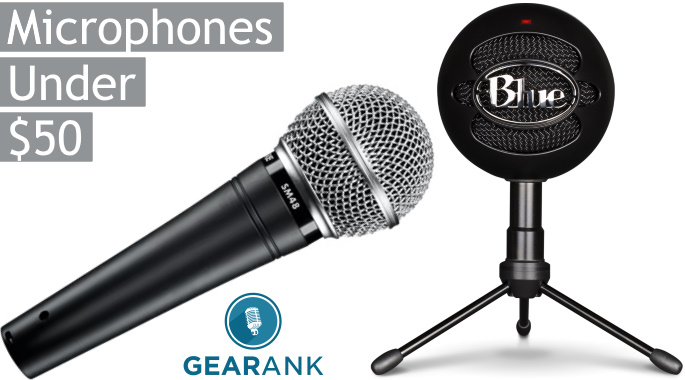
Disclosure
We recommend all products independently of 3rd parties including advertisers. We earn advertising fees from:
• • • • •

• • • • •
Amazon
As an Amazon Associate we earn from qualifying purchases.
• • • • •
More Microphones
When it comes to buying a microphone, you might assume that you need to spend a lot of money to get a high-quality one.
However, that’s not always the case. If you’re on a budget and looking for a microphone that won’t break the bank, you’ll be pleased to know that there are plenty of options available for under $50.
These microphones are suitable for a wide range of purposes, from recording vocals and podcasts to capturing instrument sounds and even gaming. With so many affordable microphones on the market, you can easily find one that meets your specific needs and budget constraints.
What to Look for in a Mic Under $50
When shopping for a mic under $50, you should consider the following factors:
- Type: Dynamic mics are more durable and less sensitive to noise, while condenser mics are more delicate and capture more detail.
- Polar Pattern: Cardioid mics pick up sound from the front and reject sound from other directions, while omnidirectional and bidirectional mics pick up sound from all or two directions, respectively.
- Connection: XLR mics require a mixer or an audio interface, USB mics plug directly into your computer, and 3.5mm mics plug into your smartphone, tablet, or laptop although these are sub-optimal for and will not be included in the selections.
- Accessories: Some mics come with stands, mounts, pop filters, windscreens, cables, and cases.
If you want to learn more before proceeding with our top picks, check out these short articles:
Our Top Picks for Mics Under $50
Our comprehensive guide covers you with the six best mics under $50 for all your needs. Whether you want to sing, podcast, game, or record, we have the perfect option.
We’ve researched so you don’t have to. Our recommendations are based on the ratings and reviews of users, experts, and owners. We’ve also listed each mic’s pros and cons, along with its key features and specifications.
With a mic under $50, you can achieve excellent sound quality and performance without breaking the bank. So, don’t let your budget hold you back from expressing yourself. Let’s dive in and find the perfect mic for you!
The Best Mics Under 50 – July 2023
| Gearank* | SRC* | Check Price | ||||||
|---|---|---|---|---|---|---|---|---|
| XLR Microphones | ||||||||

|
Shure SM48 | 92 | 1950+ | |||||

|
Sennheiser XS 1 Handheld Dynamic Microphone | 93 | 275+ | |||||
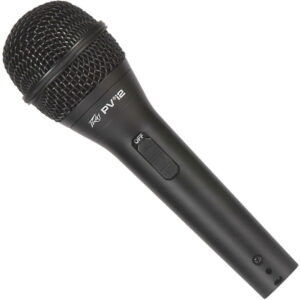
|
Peavey PVi 2 | 92 | 80+ | |||||
| XLR Value Option | ||||||||
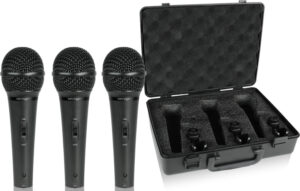
|
Behringer XM1800S (Set of 3) | 92 | 3600+ | |||||
| USB Microphones | ||||||||
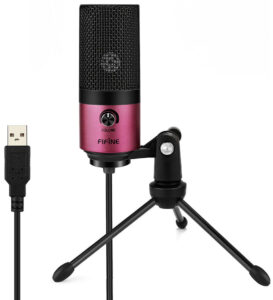
|
Fifine K669 | 91 | 7400+ | |||||
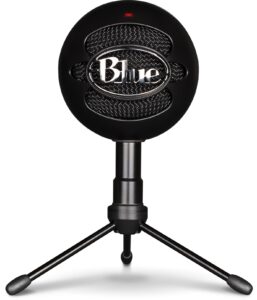
|
Blue Snowball iCE | 92 | 28250+ | |||||
Author & Contributors
Raphael Pulgar
I've been an audio engineer for 20 years specializing in rock and metal recordings. I also play guitar and produce original music for my band and other content creators.
XLR Microphones
The XLR cable is the standard connection used for plugging mics into audio interfaces, iPad Audio Interfaces, mixing consoles, and PA systems.
Shure SM48 Cardioid Dynamic Microphone
Cons
- Handling noise can be annoying
- Not as much frequency extension as the SM58
Pros
- Midrange focus great for rock vocals
- Good natural feedback attenuation
- Better than the SM58 with pops and plosives
- Great build quality
The Shure SM48 shares a lot of DNA with its more expensive sibling, the SM58.
They have the same form factor, build quality, and essential sound signature.
The differences lie in the frequency range, however. The SM48 has a narrower bandwidth, with the high frequencies extending to 14kHz vs. the SM58's 15kHz. In the low-frequency range, the SM48 rolls off the low end earlier, at 55kHz vs. 50kHz for the SM58.
Thanks to its subtly narrower bandwidth, the SM48 excels in handling plosives, pops, and proximity effects, making it a top choice for live use. Moreover, with its similar frequency response to the SM58, you can equip your live venues, rehearsal spaces, and recording studios with two SM48 mics for the price of one SM58. This not only saves you money but also enhances your sound setup. The earlier high-frequency roll-off also aids in resisting high-pitch feedback for live situations, a feature that the more expensive SM58 doesn't offer.
Despite the low-frequency roll-off, The SM48 still has the same problem handling noise as the SM58. Being an old design without internal shock mounts on the capsule, these mics are also prone to handling noise. The earlier roll-off of highs and lows takes away the "air" and "depth" of acoustic guitars and other instruments that need high and low frequencies.
Rest assured, the roll-off of the SM48's highs and lows shouldn't pose a significant issue, especially for rock bands. In genres where high-frequency detail on vocals isn't as crucial, the SM48's performance remains stellar, making it a versatile choice for various musical styles.
The SM48 is a great budget alternative to the SM58. They share the same ruggedness and overall sound signature with subtle differences in overall range.
Specifications
- Type: Dynamic
- Polar Pattern: Cardioid
- Frequency Response: 55Hz – 14kHz
- Impedance: 150 ohms
- Applications: Live vocals, podcasting, streaming.
| Website | Source | *Rating Value |
| Youtube | Bandrew Scott | 96/100 |
Sennheiser XS 1 Handheld Dynamic Microphone
Cons
- Limited low end
- May be a bit bright
Pros
- Great clarity
- Commendable battery life
- Ideal for male voices
The Sennheiser XS 1 is a handheld dynamic microphone offering a cost-effective solution for novice and experienced users. It features a cardioid pickup pattern that minimizes background noise and focuses on the sound source in front of it, resulting in high-quality audio output with exceptional clarity and crispness. Its sturdy and durable construction ensures longevity and reliability, making it perfect for frequent use and transportation. With its user-friendly design and intuitive interface, the XS 1 is accessible for beginners while offering professional-grade performance, suitable for live performances, studio recordings, speeches, and presentations.
The XS 1 is a versatile microphone that provides top-notch quality at an affordable price, offering value without compromising performance. Its specifications include a dynamic microphone type, a cardioid polar pattern, a frequency response of 55 Hz to 16 kHz, a sensitivity of 1.8 mV/Pa, and an impedance of 300 ohms, making it suitable for various applications. The microphone weighs 330 grams (11.64 ounces) and measures 180 mm x 50 mm (7.09 inches x 1.97 inches), with a metal body and steel grille construction. It also comes with a mic clip, pouch, and accessories.
The Sennheiser XS 1 has several advantages, including wireless convenience, easy portability, and running up to 10 channels. It is ideal for small spaces where clear voice projection is necessary and works well for male voices, providing excellent clarity. The microphone also has commendable battery life, offering reliable performance over extended periods. However, some users find the low-frequency response less pronounced, and the microphone tends to emphasize mid and high frequencies.
Compared to the Shure SM58, the XS 1 offers similar performance at a more affordable price point, making it a worthy competitor. In conclusion, the Sennheiser XS 1 is an excellent choice for balancing quality and affordability. Whether you are a vocalist, presenter, or content creator, the XS 1 delivers reliable results without breaking the bank.
Specifications
- Type: Dynamic
- Polar Pattern: Cardioid
- Frequency Response: 55 Hz to 16 kHz
- Impedance: 300 ohms
- Applications: Live vocals or speech.
| Website | Source | *Rating Value |
| Youtube | Obscure Mics | 98/100 |
Peavey PVi 2 Dynamic Microphone
Cons
- Not the most aesthetically pleasing, and the design is not recognizable
Pros
- Excellent build quality and durability
- Great off-axis rejection
- On/Off switch is a welcome addition
While the Peavey PVi 2, like many affordable vocal microphones, draws inspiration from the iconic Shure SM58 with its dynamic cardioid design, it stands out with its unique shape and appearance. This model boasts a robust die-cast steel case and a convenient on-off switch, setting it apart from its counterparts.
What truly surprises about the PVi 2 is not its origin from a company primarily known for amplifiers and mixers, but its exceptional build quality and durability. The heavy-duty steel enclosure, a standout feature in its class, and the resilient mesh grille, resistant to dents, are testament to its superior construction. The product's true quality is best experienced, as pictures do not do it justice.
The PVi 2 delivers a sound that's reminiscent of the Shure SM58, but it excels in one area-off-axis rejection. While it could be a better amp mic, it still performs admirably, especially considering its competitive price. In fact, it outperforms its rivals, making it the top choice for an XLR mic under $50.
There's a reason why Peavey is known for reliability and durability, and this mic helps them uphold their good reputation. The PVi 2 is similar to the legendary SM58, but it has some specific modifications that enhance its ability to withstand feedback on louder stages. These tweaks, such as [specific feature or technology], make it a reliable choice for performers in various settings.
Specifications
- Type: Dynamic
- Polar Pattern: Cardioid
- Frequency Response: Not Specified
- Impedance: Not Specified
- Applications: Live and recorded vocals or speech.
| Website | Source | *Rating Value |
| Youtube | Obscure Mics | 98/100 |
XLR Value Option
Here we feature a very affordable XLR mic that is also rated well. It's so cheap that you can get three of them for less than $50.
Behringer Ultravoice XM1800S Set of 3 Dynamic Microphones
Cons
- High and low frequency extensions are limited
- Not the best mics for recording
Pros
- Great affordable package of 3 mics
- Decent sounding mics for live performances
- Surprisingly good build quality
The Behringer Ultravoice XM1800S gives you a super-affordable way of adding three mics to your setup.
But it's not just about saving on cost because this bundle features three XM1800S dynamic transducer microphones with a super-cardioid polar pattern. This pattern, popular for stage use, is designed to reject background noise, ensuring clear and focused sound even in noisy environments.
For the price, the mics also have surprisingly decent features, including an integrated pop filter, an on/off switch, and a wide frequency response range of 80Hz to 15kHz.
This bundle comes with mic stand adapters and an impact-resistant carrying case for easy transport and storage.
The Behringer XM1800S leads this list in terms of 'bang per buck' by a significant margin. Despite being a package of 3 mics, all of them are built very well and offer a range of features that are typically found in higher-priced models. Thanks to Behringer's broad market reach, the mic pack is available nearly everywhere, making it a convenient and cost-effective choice for musicians and event organizers.
This bundle has been successfully used at a wide range of venues and situations, including home karaoke parties, small concert stages, places of worship, intimate coffee shops, and more. Because of the price, they are cheap to replace if one or more inevitably goes bad. This makes it perfect for venues that entertain more varied and aggressive musical acts.
They held out on quality in the carrying case, but don't expect a premium flight case for the mics at this price. Given the price, the recording quality, while good for live performances, may not meet the high standards of a more standard mic like the SM58. So, for professional recordings, I suggest investing in a higher-end microphone.
With the Behringer Ultravoice XM1800S, you can expand your microphone setup without breaking the bank. While it may not be top-tier in terms of performance, its value for money is unparalleled. This microphone bundle offers a budget-friendly option that doesn't compromise on quality, making it the best budget mic for those seeking a cost-effective solution.
If you're looking for just one budget microphone with higher quality, the Behringer XM8500 is a good option.
Specifications
- Type: Dynamic
- Polar Pattern: Supercardioid
- Frequency Response: 80Hz-15KHz
- Impedance: 600 ohms
- Applications: Live vocals
USB Microphones
A cheap USB microphone can connect directly to your computer and other smart devices. It offers quality that is a step above a regular computer microphone. Even the most affordable USB microphone allows direct recordings without an audio interface. They are convenient for quick capturing of musical ideas and basic recording of vocals and instruments.
Fifine K669 USB Condenser Microphone
Cons
- Included tripod base flimsy
- Lacks a bit of low midrange body
Pros
- Surprising performance for this price point
- Good build quality
- Great headroom and clarity
The Fifine K669 is a cheap, true USB condenser mic with essential features that make it viable for those looking to start their journey toward home recording.
The mic's profile follows the popular condenser mic shape and has a metal exterior for improved structural strength.
Other features include a cardioid pickup pattern and a built-in volume control knob that's conveniently located up front.
The Fifine K669 is an excellent mic for recording podcasts, voice-over work, and voice chat. Musicians and singers also benefit from its headroom and clarity. Most USB mics at this price range have a sound quality that's brittle and thin-sounding, but the Fifine K669 avoids that. Another noteworthy feature of the Fifine K669 is its solid build.
I wasn't too fond of the form factor and color, but the enclosure material and the grille are better built than they look.
I don't recommend using the included tripod base. It's flimsy, and the mic will be positioned next to your keyboard, which could be more optimal. The sound Is good for most vocals, but it lacks a bit of body in the low midrange.
The Fifine K669 will make a great first USB condenser mic for beginners on a budget. It can carry you well until you start to feel what it's missing. It doesn't have much, but it's a great starting point to learn what you want from a USB microphone.
Specifications
- Type: Condenser
- Polar Pattern: Cardioid
- Frequency Response: 20Hz-20KHz
- Power Requirements: 5V USB
- Applications: Live and recorded vocals, speech, podcasting, voiceovers
| Website | Source | *Rating Value |
| Youtube | Bandrew Scott | 86/100 |
Blue Snowball iCE Condenser Cardioid Microphone
Cons
- It can sound thin or brittle for some sound sources
Pros
- Decent sound quality on the brighter end
- Good quality materials and build
- Good side and rear rejection
The Blue Snowball iCE is a desktop microphone with a distinct ball-like profile. Yet it is as easy to use as a generic computer mic.
The improved frequency response (40Hz to 18kHz) ups the audio quality if you're used to using headset microphones.
It has a condenser transducer with a cardioid pattern that quiets down some of the background noise, which is ideal for vocal recordings but can also be used with instruments when properly positioned.
The Blue Snowball iCE's consistent positives are its straightforward functionality, portability, and sound quality. The ball form factor also makes it surprisingly durable and can survive being handled and repositioned without any parts like potentiometers wearing out. It is mostly used for voice chat, podcasting, and the like, but I've seen more vocalists and musicians have taken a liking to it as well.
The Snowball iCE's audio quality can sound thin, but this may be due to proximity/positioning issues. I recommend mounting it on a mic stand to get better results, as leaving it on your table while recording or streaming might pick up keyboard noise while you type. Having the mic closer to your mouth also thickens up the sound and makes your voice easier to mix.
The Snowball iCE is the best USB mic under 50 for a good reason. It's not a top tier recording mic but it does a lot of jobs well enough to be consistently recommended.
Specifications
- Type: Condenser
- Polar Pattern: Cardioid
- Frequency Response: 40Hz-18KHz
- Resolution: 16 bit, 44.1 kHz
- Power Requirements: 5V USB
- Applications: Live and recorded vocals, podcasting, voiceovers
| Website | Source | *Rating Value |
| PC Mag | Tom Gideon | 80/100 |
Things to Consider When Buying Budget Microphones
Here are some tips that can help you get the best mic for cheap, featuring budget-friendly wired microphones that can get the job done. Given the price range, it's unreasonable to expect high quality build and audio, but these cheap mics are more than enough for basic recording, podcasting, and audio streaming for gaming.
If you're looking for more information, you can check out our article that explains The Different Types Of Mics And Their Uses.
-
The best microphones for under 50 are those with either a Dynamic or Condenser transducer. Dynamic mics are popularly used in live performance, because of their intrinsically higher SPL (Sound Pressure Level) handling, and reliability. This high SPL handling makes dynamics mic an all-around mic option for a musician.
Dynamic mics aren't as clear sounding as some condenser mics, but they tend to color the sound in ways that many vocalists prefer. Because of the many uses you can get out of them, many of the best cheap microphones are dynamic mics.
On the other hand, Condenser mics are mostly used in recording, because of their increased sound sensitivity. The downside of the increased sensitivity of condenser microphones is that they are prone to clipping (sound breaking up when too loud) and background noise. But they are the best budget microphones for basic home recording use.
- Most of the best budget mics in this list come with cardioid or super-cardioid polar patterns, which is not surprising, given that these mics are the cheapest best mics for front vocal use. Some cheap mics offer switchable polar patterns, specifically the option to switch to an Omni-directional pattern, which allows for a wider reception area - ideal for capturing multiple singers, instruments, and other sound sources. Some mics even come with a mute button, which can be handy if you don't want to mute your input on your computer.
-
We've divided our recommended list into XLR and USB mics to help you know which ones are the best in their category. XLR cable is the standard connection used with audio interface, mixers and other pro audio gear. A USB microphone connects to your computer via a USB cable. It allows for direct recording to your computer without the need for an or recording console they are the best mic under 50 to get for those who are just starting out. These USB mics are plug and play, making them easy to setup, as long as you have enough USB connection ports. Note that there are different types of USB ports, like USB-A, USB-B, micro USB, USB-C and more. So make sure that you get the correct cable that will connect your USB microphone to your PC. Audio quality between XLR and USB mics may not always be the same even for models that have either version.
-
When setting up your mic, it is best to try different positions to find the one with the best audio quality. This is a big topic on its own so we'll focus on a few tips that are essential for those who are just starting. When using handheld mics, the most common position to mike vocals is around 3" from the mouth, but this will vary depending on the style of the singer. Condenser mics are a bit more sensitive so they don't require singers to perform as close.
With the right stand and placement, the handheld mics featured here are also viable for novice streamer or podcaster setups.
Room acoustics also play an important role if you want quiet and professional sounding recordings. Having a good quality shock mount makes it easier to do mic placement and position changes. Lavalier Microphones is another option for those who want a handsfree yet mobile solution.
Transducer Type
Polar Pattern
XLR or USB
Placement and Position
Cheap Mic Selection Methodology
The first edition was published in 2018.
Given the plethora of affordable microphones in the sub $50 price range, we meticulously focused on those that excel in music production - whether it's for vocals, guitars, or other instruments. Our rigorous process led us to a comprehensive list of 21 top-notch microphones under $50, with a staggering 72,900 review and rating sources scrutinized. These extensive data were then processed through the Gearank Algorithm, ensuring the utmost precision, to generate our rating scores out of 100. This meticulous approach allowed us to narrow down the list to the absolute best XLR and USB microphones in this price range. For a detailed insight into our methodology, please refer to How Gearank Works.
Some of the popular cheap mics that did not make it into this list include the Samson Go Mic, Tonor TC 777 and the Shure PGA48.
About the Author and Contributors
Here are the key people and sources involved in this guide's production - click on linked names for information about their music industry backgrounds.
Lead Author & Researcher
Raphael Pulgar
I've been an audio engineer for 20 years specializing in rock and metal recordings. I also play guitar and produce original music for my band and other content creators.
Quite a few people approach me in some communities I'm in, asking for good starter mic recommendations. I usually ask if they prefer to buy an audio interface with it or just need something that can stand alone. That brings me to recommend either an XLR mic or a USB mic. Some of them eventually become recording clients so I have some experience working with recorded tracks with a few of the mics in this guide. With proper vocal and instrument recording techniques, a decent room without many reflections, many of these mics have had vocals made their way to songs that are now reaching hundreds of thousands of plays on various platforms. Do check out each one's unique features to see which one suits your purpose the best.
Contributors
Jason Horton: Editing and Illustrating.
Media
Main/Top Image: Created by Gearank.com using photographs of the Shure SM48 and Blue Snowball iCE.
The individual product images were sourced from their respective manufacturers' websites, promotional materials or supporting documentation.
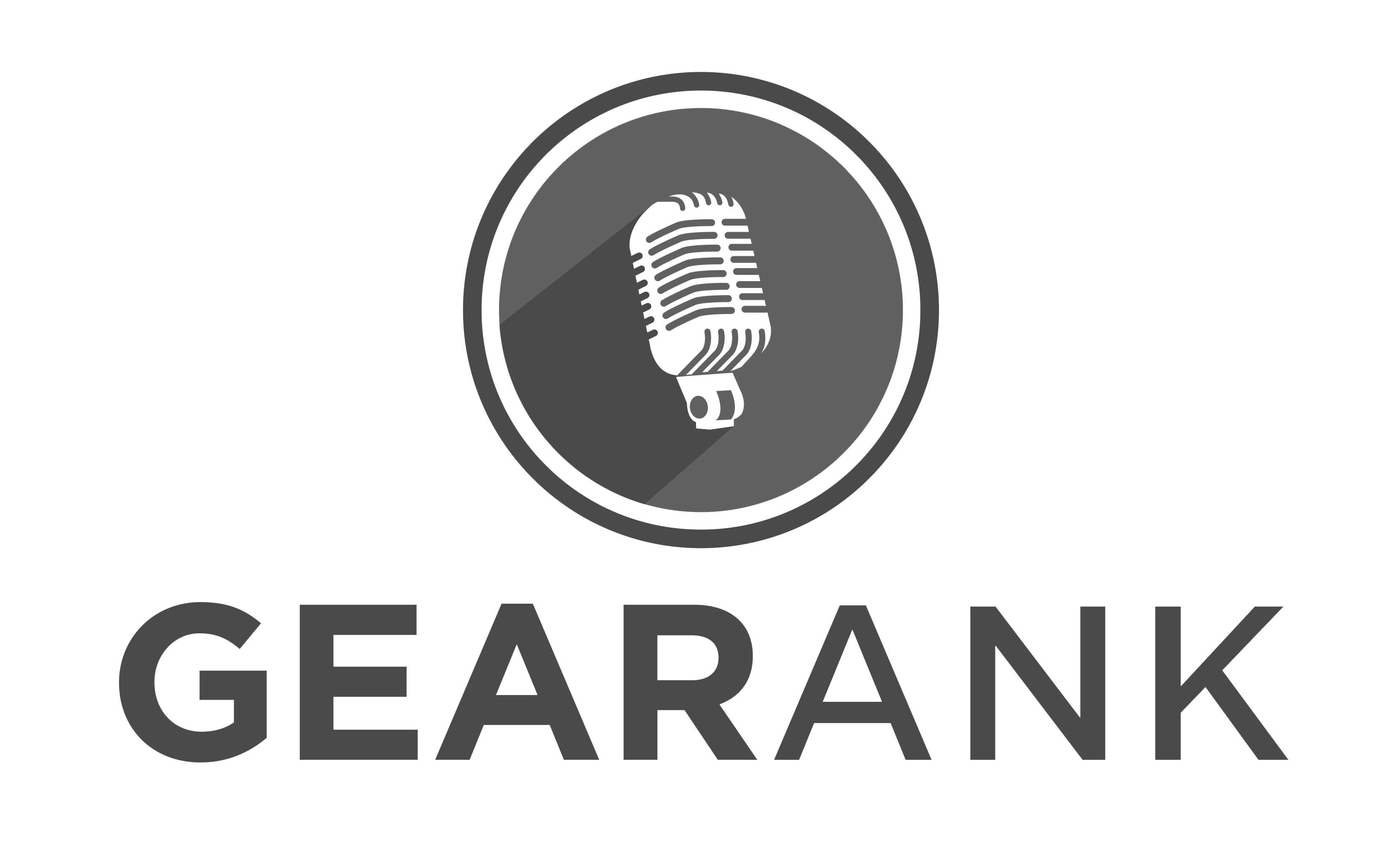
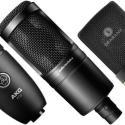
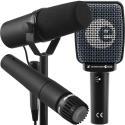
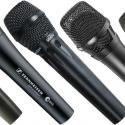
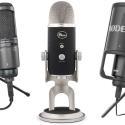

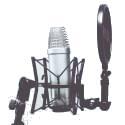
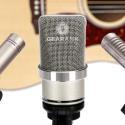
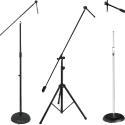
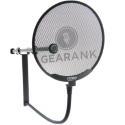
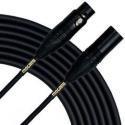

The following mics came off the recommended list when we published the December 2022 Edition:
Publication of our September 2021 Edition resulted in the following mic coming off the recommended list above: GLS Audio ES-58 Dynamic Mic (No on/off switch).
The following mics were removed from the recommended list above during our October 2020 update, but you can still read our analysis of them:
As a result of our October 2019 update the following mics came off our recommended list above, but you can still read our analysis of them:
“…this bundle has been successfully use at…”
Who proofreads these articles? Buckwheat? cmon folks.
I guess “cmon” is perfectly OK to write.
🙂
Thank you for pointing that out – it’s fixed now thanks to you. I’m the Editor responsible for that typo being published – please let us know if you find any similar mistakes.